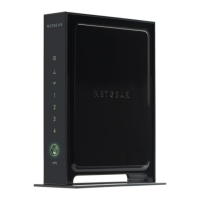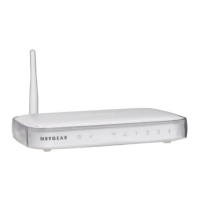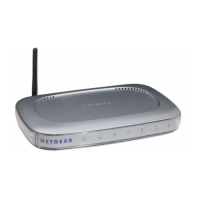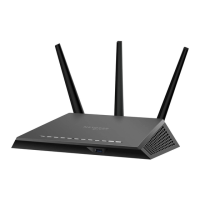Chapter 4. Content Filtering | 51
NETGEAR N300 Wireless Router JWNR2000v2 User Manual
3. In the Service Type field, select the protocol. If you are unsure, select TCP/UDP.
4. In the Starting Port field, enter the beginning port number.
• If the application uses only a single port, enter the same port number in the Ending Port
field.
• If the application uses a range of ports, enter the ending port number of the range in the
Ending Port field.
5. In the Server IP Address field, enter the IP address of your local computer that will provide
this service.
6. Click Apply. The service appears in the list in the Port Forwarding/Port Triggering screen.
Edit or Delete a Port Forwarding Entry
1. In the table, select the button next to the service name.
2. Click Edit Service or Delete Service to make changes.
3. Click Apply.
Application Example: Making a Local Web Server Public
If you host a Web server on your local network, you can use port forwarding to allow Web
requests from anyone on the Internet to reach your Web server.
To make a local Web server public:
1. Assign your Web server either a fixed IP address or a dynamic IP address using DHCP
address reservation, as explained in Use the Router as a DHCP Server on page 70. In
this example, your router will always give your Web server an IP address of
192.168.1.33.
2. In the Port Forwarding screen, configure the router to forward the HTTP service to the local
address of your Web server at 192.168.1.33.
HTTP (port 80) is the standard protocol for Web servers.
3. (Optional) Register a host name with a Dynamic DNS service, and configure your router to
use the name as described in Dynamic DNS on page 67.
To access your Web server from the Internet, a remote user must know the IP address that
has been assigned by your ISP. However, if you use a Dynamic DNS service, the remote
user can reach your server by a user-friendly Internet name, such as mynetgear.dyndns.org.
Port Triggering
Port triggering is a dynamic extension of port forwarding that is useful in these cases:
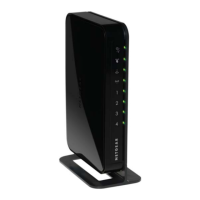
